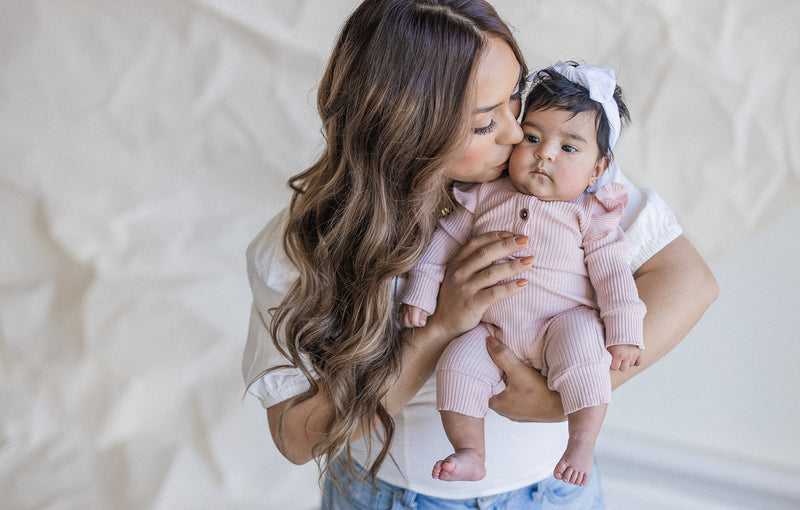Okay, mama. You’re really doing it. You’re starting to get into the groove of this thing we call “motherhood”. Whether your first child or your fourth, surely there’s been some adjustments. Now at about five months postpartum you’re starting to recognize yourself again as the sleepless nights and showerless days slowly get smaller and smaller in the rearview mirror. Hooray! Oh wait, what’s that? A giant clump of hair in your hand? Not cool.
Before you freak out, hear me out. Take my hand and let me guide you through the Who, What, Why and How of postpartum hair loss and rest-assured, by the “How” you’ll be feeling better already.
WHO
At least 50% of women experience Telogen Effluvium (aka excessive shedding) postpartum. So, take a look to your left and then your right. One of those fine ladies is right there with you. Maybe not the club you were hoping to join, but take comfort in the fact that you are not alone and PPHL is completely normal (albeit, completely annoying).
WHAT
Very simply put, postpartum hair loss is excessive shedding caused by fluctuations in hormone production.
WHY
While pregnant, your body is producing way more hormones than usual, especially estrogen. This causes most of your hair to stay in the growth (Anagen) phase which can mean long, luscious locks to go with that pregnancy glow. That’s great! Until after the baby arrives, that is, and your hormone levels take a swift dive, triggering your hair to quickly make its way to the shedding (Catagen) phase. Normal hair loss for any given person is about 100 strands per day. That number doubles for postpartum mamas. And while it can be extremely disheartening to see all that hair leave your head, the good news is that PPHL is only temporary and you can expect to see your hair return to its original fullness by your little one’s first birthday. The even better news is that while there’s nothing you can do to prevent this hair loss from happening, there are things you can do to help aid in re-growth and the appearance of fuller hair.
HOW
1. Try out a new, shorter hairstyle such as a lob or a shag that incorporates soft layers to make your hair look thicker and will also help blend in re-growth.
2. Use a volumizing shampoo and light conditioner to avoid weighing down your ‘do.
3. Go easy on heat styling and too-tight braids or ponytails to limit breakage.
4. Treat yourself to a silk pillowcase. Not only does it feel luxurious, silk is great for protecting your hair and skin.
5. Give yourself a two-minute scalp massage while shampooing. A) You deserve it and B) It increases blood circulation and stimulates hair growth while ridding the scalp of dead skin cells and product build-up. Try this scalp massage brush.
6. Hydrate. Every cell in your body needs water to function properly, including proteins that make up your hair. Don’t skimp. Aim for a minimum of half your body weight in ounces a day.
7. Eat a balanced, nutrient-rich diet and take supplements specifically formulated for hair health.
Postpartum hair loss may not be one of the finer things about motherhood, but take comfort in knowing it’s not forever. And always remember to give yourself grace. Your body has, and continues, to do amazing things. And definitely try not to stress about it, because of course stress isn’t good for anything in this case, even hair growth.






